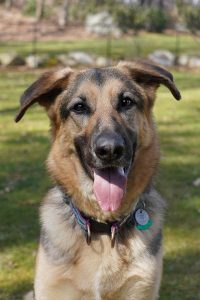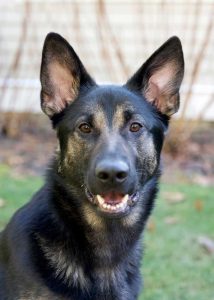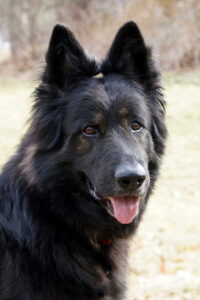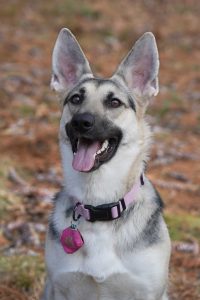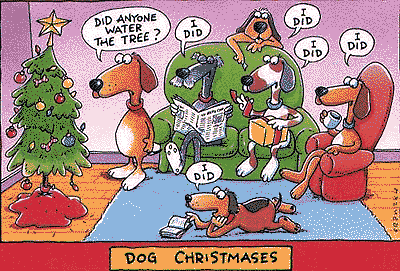
The holidays are a time to decorate and share good times with friends and family. However, the same treats and trimmings considered harmless for humans could be a serious health risk for their pets. Below are some helpful hints for pet owners to help keep their pets happy, healthy and stress free.
Here’s one holiday list you can check twice to help keep the furry members of your family happy and healthy:
Season’s eatings shouldn’t include holiday greenery such as holly, mistletoe, lilies and amaryllis. While commonly used to deck the halls, they can make your pet sick if ingested.
Everybody needs their zzzz’s, please: Make sure your companion animal has a warm place to sleep, off the floor and away from all drafts. A cozy dog or cat bed with a blanket is perfect.
Look before you light. Lit candles produce fumes that can be harmful to birds if inhaled. And don’t forget, your pet’s wagging tail can easily knock over a burning candle. Liquid potpourri is also dangerous to pets, who could ingest it from decorative bowls and simmering pots.
Whoa, Christmas tree! Their branches definitely delight pets, who’ve been known to chew on them and whatever decorations may be hanging from them. Place small, breakable ornaments up high, and keep tinsel and garland out of your pet’s reach, as these can get caught in his throat. And make sure that pine needles, which can be toxic, don’t get eaten.
Keep loose batteries in packages away from pets. They contain corrosives that can cause ulceration in your animal companion’s mouth, tongue and gastrointestinal tract if bitten or swallowed.
Your pets are not garbage disposals for holiday leftovers. Poultry bones can splinter and cause blockages, chocolates are poisonous, and any change of diet, even for one meal, may give your dog or cat severe indigestion and diarrhea. This is particularly true for older animals that have more delicate digestive systems and nutritional requirements.
If your pet is used to eating leftovers, make sure to feed them meat without rich sauces or spices; fresh vegetables are a good alternative. Candy and sugar may give your pet diarrhea or intestinal problems.
Crowds and holiday festivities can frighten some animals. If your pet does not do well with crowds and loud noise, make sure you set aside a safe and quiet haven for him to retreat to if necessary.
Some animals, especially kittens and puppies, like to chew on exposed wiring, which could electrocute your pet. Tape down loose wires to baseboards and hide wiring as much as possible.
Dogs and cats can be allowed to romp through discarded wrapping paper and boxes, but remove bows, ribbons and yarn. Cut away shopping bag handles on bags, which small dogs and cats can easily choke on. Keep aluminum foil away from your animals, which can cause vomiting and intestinal blockage.
Christmas tree water may contain fertilizers which, if ingested, can cause stomach upset. Stagnant tree water can also be a breeding ground for bacteria, which can lead to vomiting, nausea, or diarrhea. Make sure a skirt or a cloth covers the bottom of the tree.
Antifreeze Alert! Antifreeze has a pleasant taste. It also contains ethylene glycol, which can cause rapid and permanent kidney damage to your pet if he ingests even a very small amount. As little as one teaspoon can be deadly for an average size cat, which can ingest the chemical just by wandering through an antifreeze puddle and then cleaning his paws. Less than four teaspoons can be dangerous to a 10-lb. dog, which can be lapped up easily from a puddle on the garage floor. Clean up any spills, and store antifreeze in a tightly closed contained in a closed cabinet.
Dry heat can dry out your pet’s skin. A small amount of vegetable oil in food will help keep your pet comfortable.
Problem foods for pets:
Alcoholic beverages
Chocolate
Coffee (grounds, espresso beans)
Moldy or spoiled food
Onions, onion powder
Salt
Yeast Dough
Raisins or Grapes
If you suspect your pet has gotten into a potentially poisonous substance, call your veterinarian immediately.
Also don’t forget:
Guests: Your home may be filled with friends and family as you gather together for the holiday. Your dog may become overwhelmed with the noise and confusion that company can bring. It is important that you provide a quiet retreat for your dog. Realize that it is important for you, as a dog owner, to recognize when your dog is getting stressed or wound up and put them away to a quieter spot. You should also keep an eye on the door, as your dog may see the door repeatedly opening as an invitation to slip out.
Traveling without your pet: Whatever the reason, if you must leave your pet behind when you travel, careful planning and preparation will minimize the stress on both you and your pet. There are a number of options available to you. Perhaps a family member or friend can watch your dog. If not, find a reputable pet-sitter to come in and care for your animals (they can even water your plants if you will be gone a while). Being in familiar surroundings may alleviate some of the stress of you being gone. Another good option is putting your pet in a boarding kennel. If you decide to go this route, book your space early as the top kennels fill up early.
Air travel tips:
If you’ll be flying with your animal companion this yuletide season–and if your pet must travel in the cargo hold–please take the following precautions:
Visit the vet and make sure your pet is “good to go.” Fido will need a check-up and up-to-date vaccinations. Obtain a health certificate from your vet within 10 days of departure.
Purchase a USDA-approved shipping crate that’s large enough for your pet to stand in and change position. Line the bottom with shredded paper towels and write the words “LIVE ANIMAL” in letters at least one inch high on the top and sides of the crate. Tape your destination information along with a photo of your pet to the top of the crate. This can be a lifesaver should your pet escape from the carrier.
Your pet will be wearing a collar and ID tag, right? Good! Don’t forget to include the address and telephone number of your destination on the tag.
Prior to the trip, freeze water in a sturdy bowl for your pet. This way, it won’t spill during loading and will have melted by the time she gets thirsty. Tape a small cloth pouch of dry food outside the crate, enabling airline personnel to feed her on long-distance flights or layovers.

